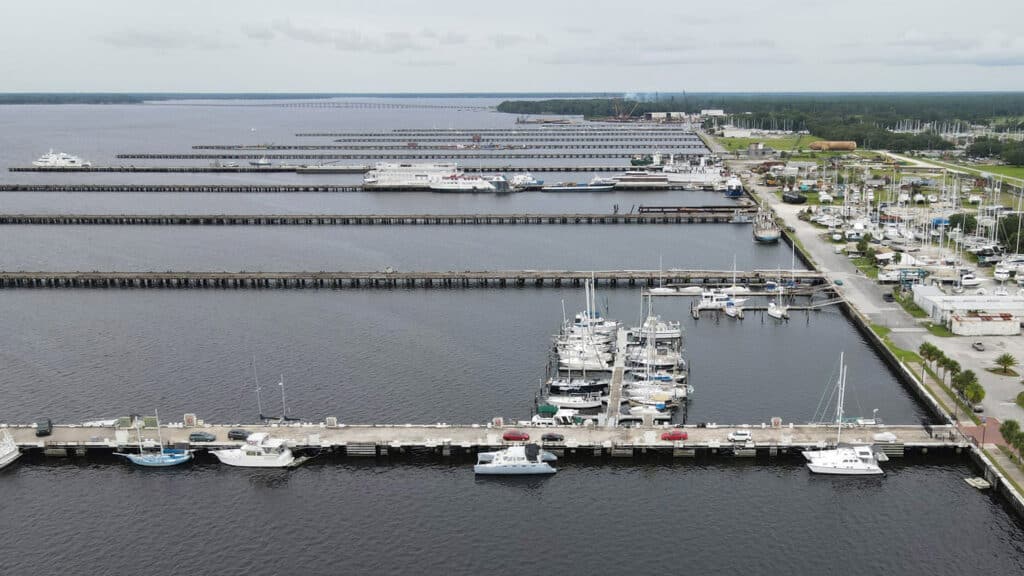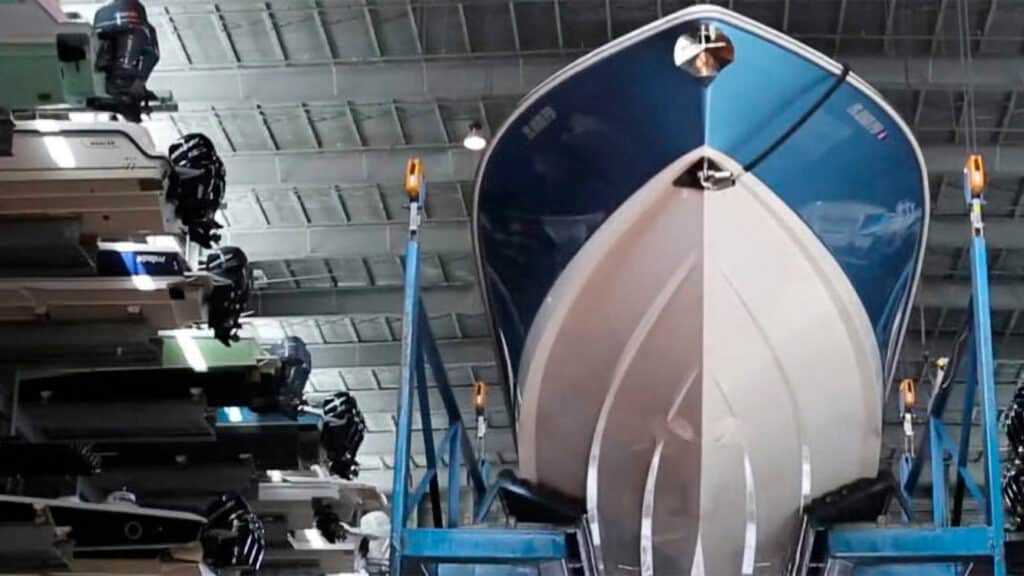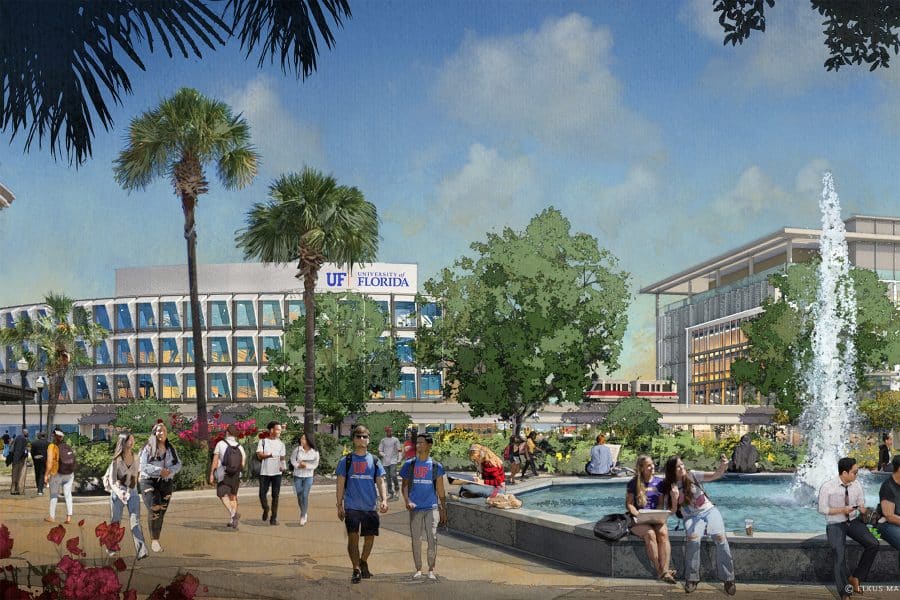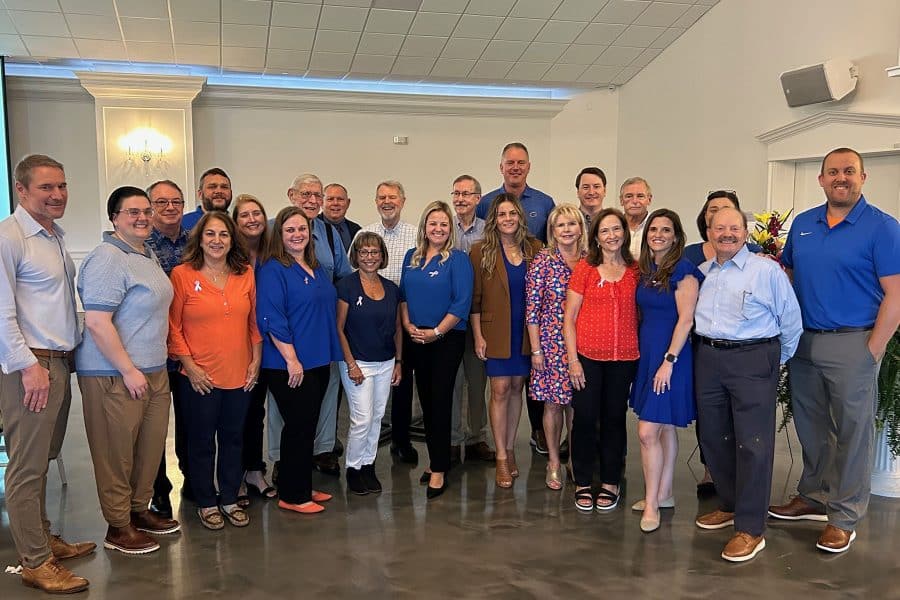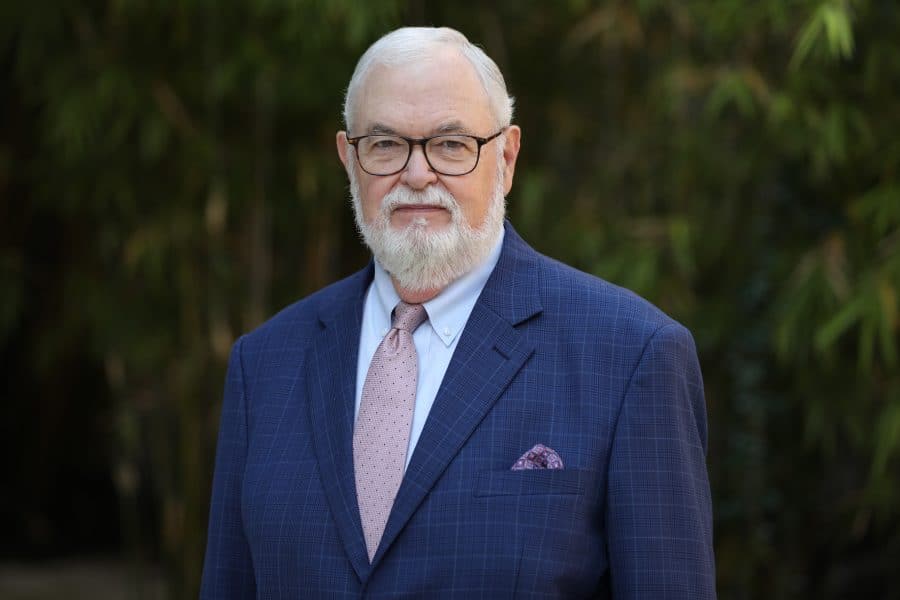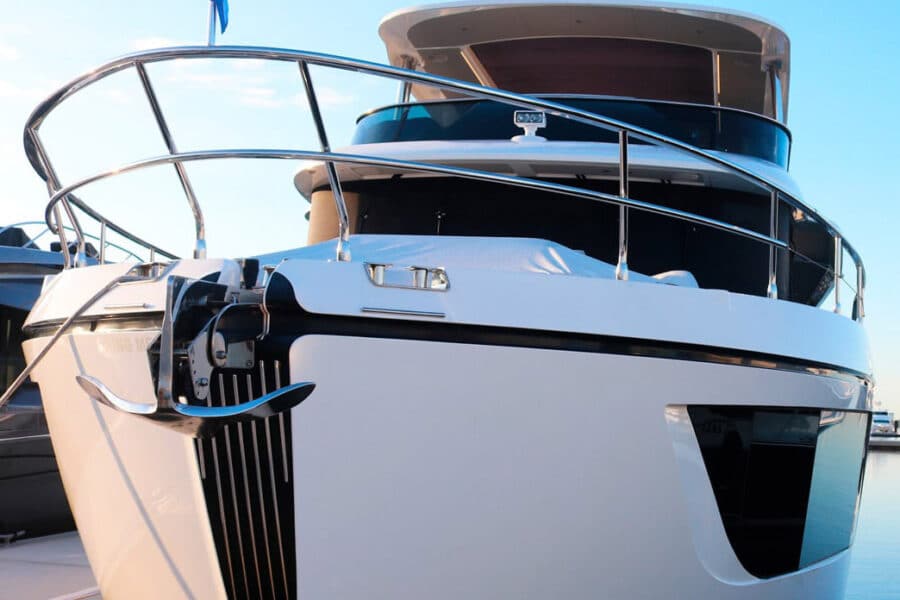
A tight ship
The stiffest headwind most boaters face these days isn’t from a storm.
It’s finding a place to tie up. Slips at marinas are so hard to find that Florida boat and yacht brokers advise clients not to buy a watercraft until they have first found somewhere to store it. “There’s just too many boats and not enough places to park them,” said Nancy Ballard, a longtime yacht broker in St. Petersburg, Fla.
The logjam follows in the wake of the global pandemic, which coaxed more people to socially distance outdoors, including on waterways. The annual economic activity of U.S. recreational boating increased 35% to $230 billion in 2023 from $170 billion in 2018, per the National Marine Manufacturers Association. But all the boating is coming when few marinas are being built, which marine industry experts blame on regulatory hurdles, high costs and the scarcity of suitable waterfront land.
Nowhere are the issues more evident than in Florida, the nation’s favorite place to launch a boat. With its year-round warm weather and 8,436 miles of shoreline, Florida ranks No. 1 in the number of pleasure boats with 1 million registered in 2023, up 8% from 2019 (Figure 1), according to the Florida Highway Safety & Motor Vehicles. This doesn’t count the large transit fleet of foreign-flag yachts, which Florida reportedly has more than anywhere else, too. The Sunshine State also has more marinas than any other state: 1,242 of them, 12.6% of the nation’s total (Figure 2), according to IBISWorld, a market research firm that bases its estimates on U.S. Census Bureau business surveys.
Figure 1 – Number of pleasure boats registered in Florida
Source: Florida Highway Safety & Motor Vehicles
Figure 2 – Florida ranks no. 1 in marinas
The U.S. Census Bureau defines marinas as commercial docking and/or storage facilities for pleasure craft that may include sales of fuel and marine supplies, and services such as renting boats. Source: IBISWorld
And yet, counterintuitively, the count of marinas in Florida dropped 6.5% from 2018 to 2023 (Figure 3). In prime South Florida boating markets such as Fort Lauderdale, “there’s seven boats for every slip,” claimed Phil Purcell, director of the Marine Industries Association of South Florida, a trade group.
Figure 3 – Number of Florida marinas
Source: IBISWorld
The market dynamics may be a drag for boaters, but they’ve lured a boatload of private equity and publicly traded companies, which have spent billions of dollars to buy marinas in recent years. Previously, marinas were a little noticed real estate class dominated by mom-and-pop operators and municipal governments. Now they’re being compared to other real estate consolidations in past cycles: self-storage units, mobile home communities and RV parks — once fragmented subsectors now led by institutional investors. More than 90% of U.S. marina operators have only one location, according to a Dun & Bradstreet analysis in 2021.
“We’re just the latest roll-up strategy in the real estate business that no one has been able to do before,” said Bryan Redmond, CEO of Suntex Marina Investors, the industry’s first REIT. Suntex has a portfolio of 93 marinas, many purchased since the IRS ruled in 2018 that rents from floating docks qualify as real estate income for REIT purposes. Two publicly traded REITs have since entered the market, including Sun Communities, the largest operator of RV and mobile home parks. In the last four years, Sun Communities spent more than $3 billion to buy more than 100 marinas, including market leader Safe Harbor Marinas, and now generates 21% of its rental income from marinas, according to an investor presentation.
“I think there are, depending how you define them, 35 to 40 groups actively trying to acquire marinas. Probably five years ago there were less than 10,” said Matt Putnam, senior vice president for Collier’s International Leisure Property Advisors in Tampa. “There’s a lot more money chasing good-quality deals.”
With the flood of new investments, many marinas are upping their games by creating amenity-packed destinations with swimming pools, clubhouses for yacht crews, and more revenue generators like restaurants, ship stores and boat lifts. Docks are being reconfigured and lengthened to accommodate increasingly larger vessels, which command higher rental rates; dry-stack facilities are being added or expanded to store vessels out of the water. Big operators are inking public-private partnerships to run marinas for cash-strapped municipalities, a fast-growing trend. In prime locations like coastal South Florida, marinas are centerpieces of ambitious mixed-use developments that include public gathering spots, retail shops, hotels and condo towers.
Yet, despite the high demand and the high dollars, we found only a small handful of truly new marinas built in Florida in recent years. It turns out, unlike other real estate sectors — say, offices, hotels or apartments — you can’t build your way into this business — you buy.
Our strategy has been to buy the best-in-class marinas in strong boater markets
—Victor Ballestas
principal with Integra
A word about data: limited
Fundamentally, marinas make money by renting space, just like apartments, RV parks and other classes of real estate. But whereas investors of traditional real estate can feed on a smorgasbord of performance data — such as asking rents, vacancy levels and default rates in countless markets — “there’s no such aggregated data for marinas,” said Matt Juall, a global marina consultant who works out of Orlando. Obtaining useful property appraisal and sales data is also challenging. The Florida Department of Revenue collects county property tax roll information but there’s no code specific to marinas, a spokesperson said, and Florida county property appraisers inconsistently and incompletely track marinas. Finally, it’s tricky to determine whether the submerged lands under a marina are owned by the state of Florida or a private entity. The Florida Department of Environmental Protection (DEP) has records on submerged lands owned by the state, and the taxes that marinas pay the state’s Board of Trustees of the Internal Improvement Trust Fund (TIITF) to lease the land. But DEP officials did not provide the public records by press time.
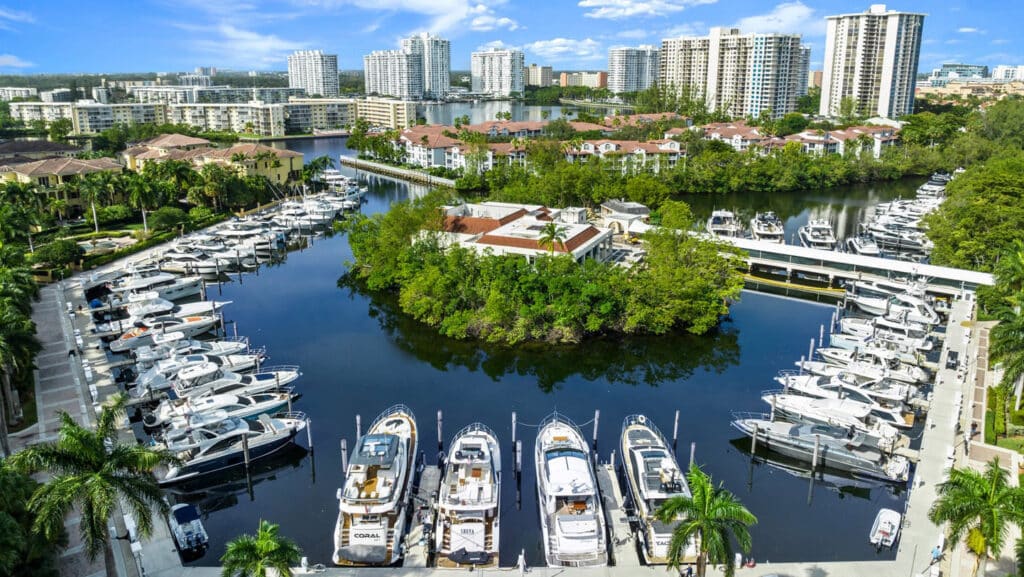
Lay of the waterfront land
Most marinas in Florida were built in the 1960s to 1970s, an era when waterfront land was more available and environmental regulations regarding dredging and waterborne construction were less restrictive. Today, the barriers to entry are steeper and sometimes seem unsurmountable. “Part of the problem is the easy sites are done,” said Hans Wilson, an environmental consultant and marine engineer who has worked in the business for 40 years. “We’re left with sites that are not optimum for marina development. So, it becomes a great challenge to get those marinas constructed.”
Virtually all sources we interviewed echoed Wilson. Jason Spalding, owner of International Marina Services in Fort Lauderdale, said developers can pencil out the purchase of prime waterfront land only if they build taller and more “doors,” such as hotels and condo towers. “They can go vertical all day whereas a marina can’t,” he said. Julie Berry, a leading broker of marinas and shipyards at CBRE in Fort Lauderdale, said, “if it’s in an area where they can do condos, they’re going to do condos. They get a lot more money for them.”
Lee County has lost hundreds of slips in the past 20 years, estimated Wilson, who ticked off a half dozen closed marinas and docking facilities. Example: The Fort Myers Yacht and Shipbuilding site, which was redeveloped into the Oasis Condominium; its permits lapsed, and its 66 slips are gone. Damages from hurricanes and storms — an ever-present danger — has caused the closure of more than a few marinas. In Miami-Dade County, the Department of Environmental Resources Management provided a list of five marinas that have been redeveloped, reduced or closed in recent years, resulting in the loss of 205 slips.
In contrast, we found only a handful of new marinas that either opened or received approvals in recent years. These include Marina Pointe in South Tampa, a mixed-use development where many condos come with their own dock, and a 122-slip marina reportedly under construction on Okaloosa Island in the Florida panhandle. Along the Atlantic coast, marina veteran Bob Skinner said he could think of just one marina built in at least a generation: Seahaven Superyacht Marina, which opened in 2018 in Dania Beach. (It was purchased by Suntex in 2021.) A professor of real estate at the University of North Carolina, Skinner grew up around a Florida marina, Cozy Cove in Dania Beach, which his family bought and renovated in the 1970s.
Undoubtedly, the biggest curb on building and expanding marinas are federal, state and local environmental regulations designed to protect aquatic habitats. In Florida, regulations focus particularly on preventing harm to mangroves, seagrasses and manatees. Obtaining a permit to build or expand a marina is a lengthy process that requires in-depth scientific and engineering studies. “If you try to permit a marina it could very well take you five years,” said Juall, who previously managed acquisitions for Port 32 Marinas, which owns 10 marinas in Florida. “That deters a lot of investors.” But this is good news from an owner’s perspective: Marinas aren’t prone to being overbuilt like apartments or office buildings, which has allowed them to steadily increase slip rates.
The lifestyle is a big draw
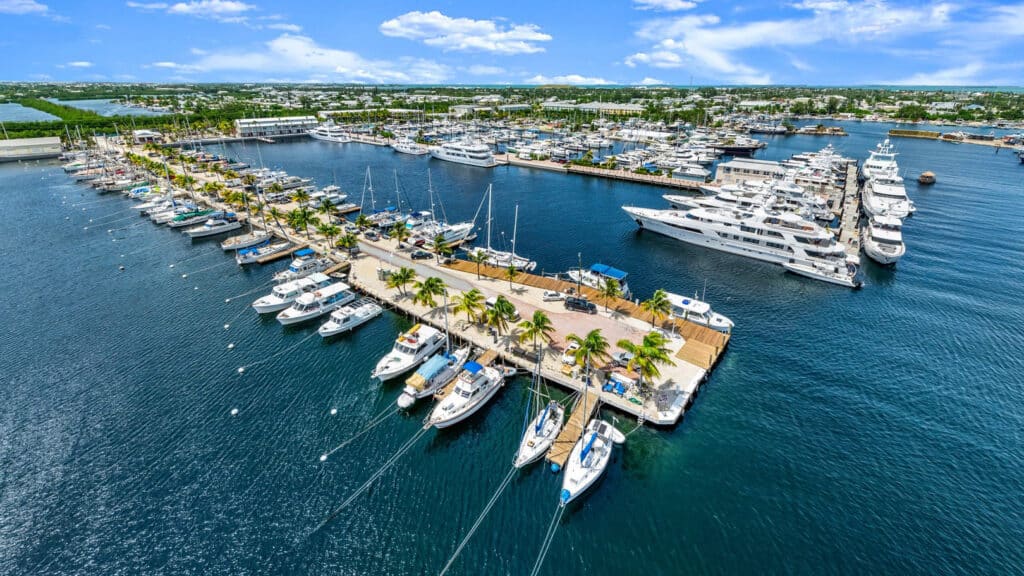
Marinas have an allure that self-storage units and apartments just don’t have. “It’s definitely a sexier business to be in and it’s more fun,” said Rob Gillespie, a residential real estate investor and boater from Cleveland. In 2021, he relocated to a gated community in Palm City, where he ties up his 45-foot yacht, and began searching for available marinas. In April, he and a partner bought a scruffy one from a retiring owner on the Withlacoochee River in Yankeetown near the Gulf Coast. They plan to install modern floating docks, reopen unusable wet slips, build dry slips and add a tasting room for his wife’s side business of making distilled products. “We’ve always been fascinated by marinas,” Gillespie said.
Perhaps the most-telling story comes from Victor Ballestas who entered the marina business by fluke. Ballestas is a principal of Integra, a Miami-based real estate development and investment firm, and a graduate of the University of Florida’s Nathan S. Collier Master of Science in Real Estate program. He grew up on the water in Miami Beach, where he captained his own motorboat before he was old enough to drive a car. He stuck his toe in the business when his former employer Starwood Capital sold a group of hotels to the Carlyle Group, including a small fishing marina in Islamorada, the Florida Keys. The Carlyle executive handling the deal said he didn’t know what to do with it; the marina was little more than a rounding error. “So, literally in that conversation I made him an offer,” Ballestas recalled. “He accepted and I owned the marina.” Ballestas and his wife ran the marina as a weekend hobby, and they purchased a second one. Soon his fellow partners at Integra became intrigued as they looked for alternatives to its core multifamily developments, where the investment fundamentals were softening. They crafted a strategy to buy first-rate assets in prime boating markets, principally in Florida, recruited Chicago-based private equity partner BLG Capital and went on a buying spree. In five years, Integra has amassed a $350 million portfolio of eight marinas, with seven in Florida including Perry Marina, the largest deep-water marina in the Keys. Integra is adding restaurants and other amenities to many of them to increase profits. “We like the supply and demand characteristics,” Ballestas said of marinas. “It’s not a bad lifestyle.”
Yachting capital
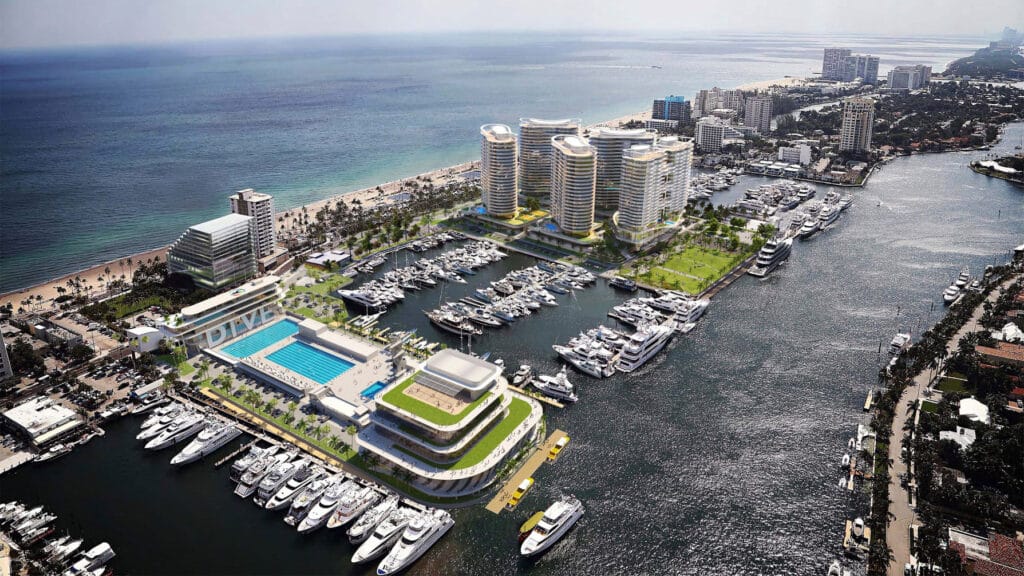
Probably nowhere else is marina activity and investment as strong as in Fort Lauderdale, which has 165 miles of navigable waterways and bills itself as the “yachting capital of the world.”
The three most-notable projects are part of ambitious mixed-use developments, including Pier Sixty-Six, a marina that traces its roots to a Phillips 66 Petroleum fuel dock and gas station built in the 1950s. Orlando-based Tavistock Development is spending hundreds of millions of dollars to redevelop the property, including overhauling an iconic hotel with rotating restaurant atop, adding 90 condominiums and building floating docks to accommodate vessels up to 400 feet in length. The marina is as invaluable to the project as a snow-capped mountain is to a ski resort, marina director Megan Legasse said.
Up the Intracoastal Waterway is the old Las Olas Marina, which is owned by the city of Fort Lauderdale. The city awarded a 50-year contract to Suntex to rebuild and manage the marina, which had devolved into little more than a parking lot, said Mayor Dean Trantalis. The $70 million project includes dredging, relocating a pump station, doubling dockage to 6,000 linear feet, installing slips big enough for superyachts, and building an upscale restaurant and marine-related retail space with amenities for yacht crews. City documents show it is expected to generate $2.3 million a year to the city from the rental income and a percentage of revenues; Suntex will also pay TIITF to lease the state-owned submerged land.
A short boat ride away is one of Florida’s most historic marinas — Bahia Mar Yachting Center, which is the main hub for the Fort Lauderdale International Boat Show and even a literary landmark. (A bronze plaque is dedicated to the houseboat of a character who lived at Bahia Mar invented by mystery writer John D. MacDonald.) Fort Lauderdale’s commission approved a contract of up to 100 years with long-time South Florida developers Jimmy and Kenny Tate of Tate Capital and partner Sergio Rok of Rok Enterprises to redevelop the 40-acre property, which includes a 245-slip megayacht marina a short walk to the beach. The master plan calls for a 256-key resort hotel with 60 condo units, 350 condos in four towers, 85,000 square feet of waterfront commercial space and parking for 1,200 vehicles. Last year, Jorge Perez’s Related Group joined the team to build the towers, whose units will start at roughly $5 million. A new Marina Village includes a broad promenade lined with restaurants and a revamped kiosk for the Jungle Queen, a 385-passenger riverboat that cruises waterways. “We’re very excited. I can tell you it’s the single largest development my family has ever been involved in,” said Jimmy Tate, a passionate boater who owns a 44-foot yacht. He told us he can’t imagine redeveloping the site without making the marina its centerpiece. “I guess people could. But I don’t see why they would. The marina business is a great business,” he said. “Someone buying [a residence] at Bahia Mar is buying a lifestyle. We believe that’s what differentiates this. Everyone who has a megayacht wants it behind their house, on the water and [near] the beach. Not many places offer that.”
Why is the city —which continues to operate two other marinas — turning to private companies to run Las Olas and Bahia Mar? “Well, first of all the capital investment that’s necessary in order to make these improvements is substantial,” Trantalis said. “The city is better off entering into partnership agreements that will benefit the community without having to spend taxpayer dollars.” The projects also help the city satisfy a core objective of improving public access to beaches, waterways and parks. “It’s all part of the experience when you come to Fort Lauderdale. You dock your boat, walk to a restaurant and enjoy the waterfront experience. We can never have enough dock space as far as we’re concerned, and we continue to look for more opportunities.”
Similar sentiments have been expressed by officials in St. Petersburg and Fort Myers who are finalizing contracts with private companies to redevelop their own largely outdated marinas.
But it’d be inaccurate to say this is the only formula cities are using — some are going their own way. Consider the city of Miami, which operates three marinas and spent $22 million to revamp Dinner Key, a 587-slip facility that is reportedly the largest on the East Coast. Once home to Pan American’s famed Clipper flying boats, the marina also includes 250 moorings in Biscayne Bay. Further up the coast, Palm Beach spent $80 million to upgrade its 84-slip marina, which now accommodates boats 60 to 294 feet. Asked why the city didn’t contract with a private company, Deputy Town Manager Carolyn Stone said continuing to manage the marina directly “ensures operational continuity that stays true to the town’s ethos and emphasizes quality of life and small-town charm.”
Navigating the future
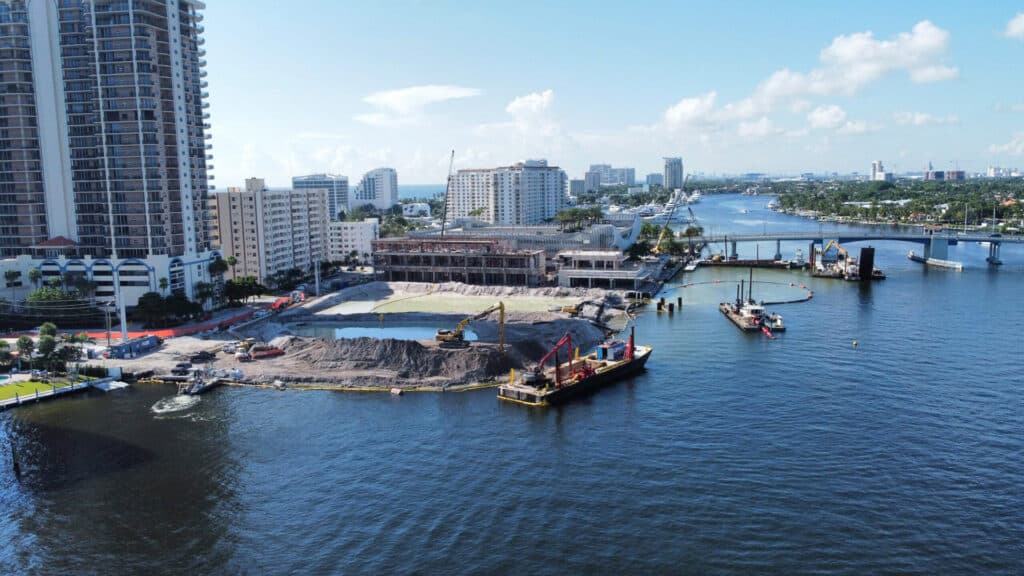
The heated market for acquisitions of privately held marinas has cooled this year, which investors blame on higher interest rates and because increased competition has pushed up prices for the best properties. Marinas purchased at attractive cap rates of 7% to 8% a few years ago are now priced at roughly 5%.
“We’ve decided to spend 2024 focusing on the management side,” Ballestas said. He noted that each of the company’s marinas requires separate marketing and operational strategies. These aren’t cookie-cutter real estate assets — some appeal to weekend boaters and fishermen, others to the superyacht set. “You have different marinas with different types of boaters who have different needs,” he said. “So, you have to figure out what the market is for every specific marina. But I think once interest rates start coming down later in 2024, we’ll probably ramp acquisitions back up. Right now, we’re kind of in a holding pattern unless we find something that’s just too good to pass up.”
Marinas are also benefiting from the growing popularity of boat clubs, such as Freedom Boat Club, which has more than 90,000 members who want to spend time on the water but don’t want to buy — or can afford — a boat.
For its part, Suntex continues to add to its marina war chest. In April, the company and its majority owner Centerbridge Partners closed on a $1.2 billion fund to purchase more marinas and to make capital improvements to ones it already owns. Despite a recent dip in the sales of boats, the fundamentals of the business remain strong, Redmond said. “At the end the day, the core business is storage. Regardless of the economy, the weather or anything else that comes at you, you have to store the boat,” he said. It’s a good bet Suntex will buy more marinas in Florida. “I think it will always be the strongest market,” Redmond said of the Sunshine State. “There’s nowhere else in the U.S. you can create that natural atmosphere for boating to be so attractive.”
Charles Boisseau is editor of Due Diligence.
Related stories
For the media
Looking for an expert or have an inquiry?
Submit your news
Contact us
Follow us on social
@ufwarrington | #BusinessGators
